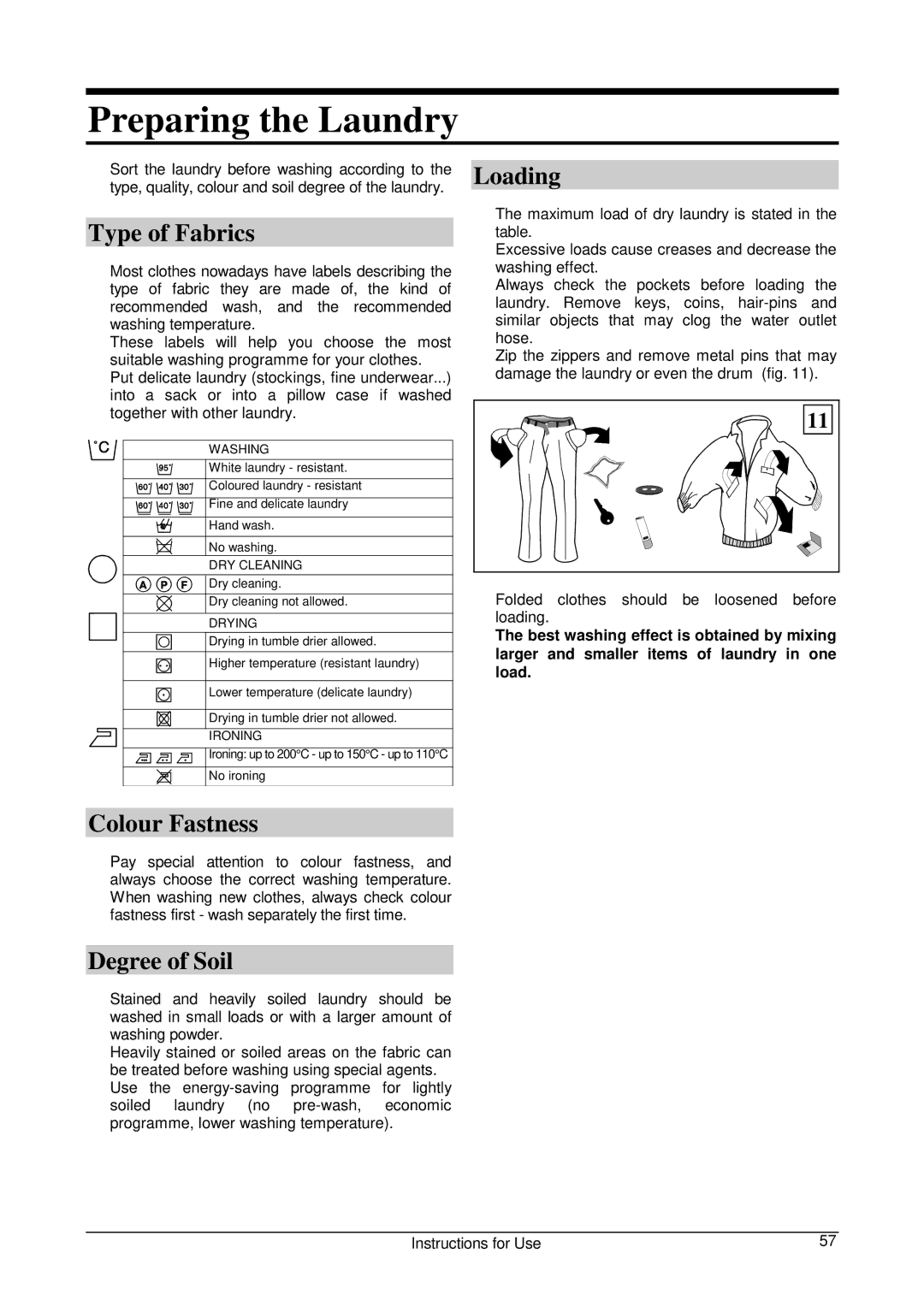
Preparing the Laundry
Sort the laundry before washing according to the type, quality, colour and soil degree of the laundry.
Type of Fabrics
Most clothes nowadays have labels describing the type of fabric they are made of, the kind of recommended wash, and the recommended washing temperature.
These labels will help you choose the most suitable washing programme for your clothes. Put delicate laundry (stockings, fine underwear...) into a sack or into a pillow case if washed together with other laundry.
WASHING
White laundry - resistant.
Coloured laundry - resistant
Fine and delicate laundry
Hand wash.
No washing.
DRY CLEANING
Dry cleaning.
Dry cleaning not allowed.
DRYING
Drying in tumble drier allowed.
Higher temperature (resistant laundry)
Lower temperature (delicate laundry)
Drying in tumble drier not allowed.
IRONING
Ironing: up to 200°C - up to 150°C - up to 110°C
No ironing
Colour Fastness
Pay special attention to colour fastness, and always choose the correct washing temperature. When washing new clothes, always check colour fastness first - wash separately the first time.
Degree of Soil
Stained and heavily soiled laundry should be washed in small loads or with a larger amount of washing powder.
Heavily stained or soiled areas on the fabric can be treated before washing using special agents. Use the
Loading
The maximum load of dry laundry is stated in the table.
Excessive loads cause creases and decrease the washing effect.
Always check the pockets before loading the laundry. Remove keys, coins,
Zip the zippers and remove metal pins that may damage the laundry or even the drum (fig. 11).
11 |
Folded clothes should be loosened before |
loading. |
The best washing effect is obtained by mixing larger and smaller items of laundry in one load.
Instructions for Use | 57 |
